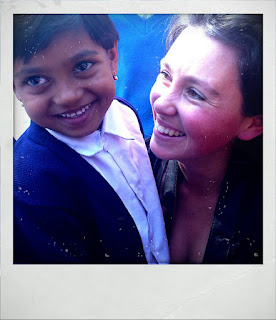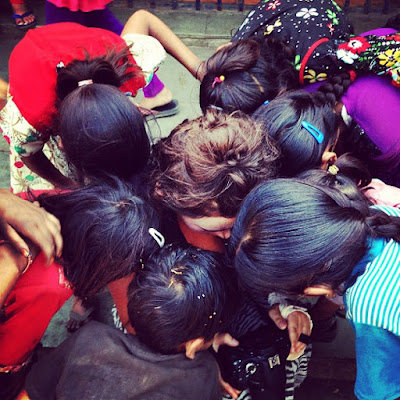 |
| The view at Nautilus Hotel and Restaurant |
Consider me
your on-the-ground eyes and ears covering off all the main things you need to thrive
during your time in Raro. And if you go/have gone and I’m forgetting anything,
let me know and I’ll add it in!
Raratonga
is a little island in the South Pacific (think Fiji or Tahiti- but better) and
is about a 3.5 hour flight from Auckland, New Zealand. It’s a beautiful
circular island 32km around and a causal 45 min drive to circumvent. The main
town is called Avuva and most of the tourists like to be in Muri Beach.
Before you go
 |
| The view at Little Polynesian |
Rarotonga
and New Zealand are conveniently on the same currency. Considering a lot of
places only take cash, it pays to use the Kiwi ATM’s before you go to get out
your cash as each time you do that in Raro it’ll cost you $5.
On the flight
If you’re flying Jet Star, pack an iPad or device to watch a show on and pack your own snacks. By the time you land you’ll be starving and the whole island is closed for food.Where to stay
We visited
countless hotels in person to check out if the photos were #reality. Here’s my
steer on what was worth considering
Budget Picks
The Raratongan
(cheap and cheerful and full of families. Cool pool, beautiful beach but a
little tired overall as a resort. Lots of carbs on the menu…;)
Mid- Upper Range
Pacific Beach Resort (where we stayed)
Manuia
High End Picks
Nautilus
Little Polynesian
Te Manava
Where to eat
IMPORTANT: The popular
restaurants get booked out quick. If you can, try to book ahead of time via
email or on the phone. If you don’t
get time to do that before you arrive, simply have your hotel concierge call a
few restaurants on the first day and make bookings for you. OF NOTE: A lot of the hotel restaurants do a happy hour with cheap drinks. There were a few people walking from hotel to hotel along the main beachees to catch the best prices.
Cheap and Cheerful
Cook Islands Coffee Company (hands down the BEST croissants and coffee I have ever tasted and I’ve been to over 45 countries)
Villi’s burgers
Mooring Café
Be Fruitful Café (the most delicious real fruit ice creams and amazing Kiwi owners)
Mid Range
Manuia On the Beach Café (OTB) -4-6pm
Happy Hour and delicious food
Trader Jacks (classic Raro must do -
sells burgers/chips/pizza etc)
Charlie’s Bar (in between the two best snorkeling places) and has live music on
the beachfront. Fish tacos are delicious).
Soul Café (fab smoothies)
Expensive
Nautilus (the calamari and wok fried vegetables were impeccable)
Little Polynesian (go for the food, stay for the view)
Transport
You have three options
and if you go for option 2 or 3 I’d highly recommend booking BEFORE you go. It
took us hours of walking around to find a company that had any availability.
1) Bus (there are two that go clockwise
and anti-clockwise every 45 min).
2) Car (rent one for about NZ $50 per
day. Speed limit is either 30 or 50km/h on the whole island)
3) Scooter (rent one for about NZ$25 per day. You can fit one or two on a scooter. BUT you have to go to the police station early that morning and set your theory (easy), then return to get your scooter and bring it back to the station for your practical test (medium) before you’re good to go.
Activities
There are heaps of great activities you can do on Raro but here’s my
non-exhaustive pick of the best five.1. Swim with the Turtles - this is a MUST do if you are a confident swimmer. It’s expensive ($150pp but it’s worth every cent)
2. Snorkeling -You can snorkel anywhere but here are two really good options 1) Captain Tama’s or Lagoon Cruises for a paid tour OR 2) DIY and go off the coast at Fruits of Raratonga or out the front of the Raratongan hotel.
3 Kayak/Paddleboarding – most hotels offer this equipment for free and doing this around the lagoon area near Muri beach in crystal clear waters is spectacular.
4. Buggy’s – a lot of people really seemed to enjoy getting muddy in the buggies. I’d give this a go next time.
5. Saturday markets in the main town – an awesome relaxed vibe with live music, delicious food and fair prices on souvenirs.
6. Tim would like to add, Whale watching tours and fishing charters and the night markets in Muri Beach (Sunday is the main night) for cheap eats.
Ok, I’m hooked –I want to go. But how can I save money?
Flights – we flew in with JetStar and flew out with AIrNZ saving hundreds.Luggage – it was significantly cheaper to go with just hand luggage and pack light.
Hotel transfers – instead of spending $100 EACH WAY for a 25 min car ride, we hired a local taxi for $40. If your hotel is also trying to charge you $200 return, call Ronald 73223 is his number (and he’ll hook you up.
Half board –A few of the hotels offer full board/half board options. You’ll want to eat out so go for the half board or no board and eat out!
Instead of using the big car companies (Avis) for hiring a vehicle, we went local and saved a fair bit.
We brought Kiwi snacks with us to keep us going during the day in between main meals.
What would I do differently next time?
Three things. First, go for longer. I wish we had brought the kids and I wish we had gone for 2-4 weeks. Secondly, gone for an Air BnB. Now that I know how EPIC Raro is I’d feel confident in booking a beautiful Air BnB for the family to enjoy. Thirdly, brought a GoPro with me for the incredible underwater safari that greets you wherever you swim.
Love,
Helen

















